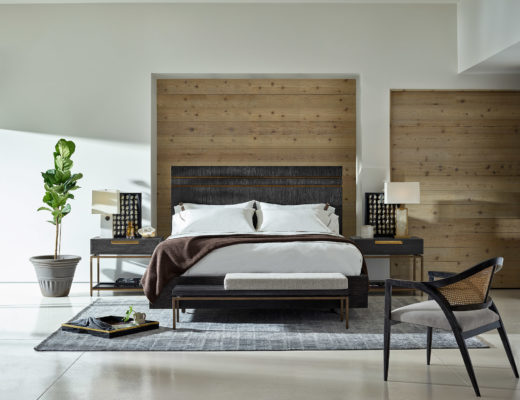Franziska Neumann owns FZK Franziska, a creative agency that helps design-oriented clients grow and steward their online presence.
Instagram has been around for nearly a decade now, but with its constantly-changing algorithm and new tools (hello IGTV), it can be hard to keep up with best practices. Interior designers face unique challenges when using Instagram for their business. Not only do you have to curate a beautiful feed that speaks to your brand, you also need to keep your audiences engaged. And I use audiences in the plural because you’re not always trying to reach a single group of people. Here are some of my top tips for designers looking to brand their feed and grow their reach using Instagram, based on my years of helping design-focused clients grow and steward their online presence.
Stop worrying about followers
Instagram is making it harder and harder to achieve a huge follower count, but luckily for us, you can have a flourishing Instagram community, establish brand relationships, and reach your business goals with a smaller following.
Many of my clients breathe a big sigh of relief when I tell them they don’t have to be so worried about the follower count. Yes, Instagram gives you some cool features when you reach 10K followers (like the ‘Swipe Up’ in your stories), but engagement is a much more important metric.
The term ‘micro-influencer’ is now used to talk about Instagram users with 1000-5000 followers, and as long as those followers are actively engaged in what you’re posting, you’re doing something right.
Know your audience
To build that engagement with your followers, though, you need to understand who they are and what they’re looking for. Interior designers typically want to reach three different audiences with their Instagram account – brands, press/influencers, and clients – and the way you attract each of them will be different.
Press
When press looks for brands and designers to work with, they’re primarily looking for a polished feed. They typically give as much, if not more, consideration to your social media presence as the portfolio on your website when trying to figure out if you’re a good fit for their story or project.
For that reason, interior designers in particular should be mindful of keeping any quirky, behind-the-scenes, off-the-cuff content in their stories. This type of content can be great for engagement, but can also deter press if it makes your feed look sloppy.
Brands
When deciding to invest in influencer marketing, brands will have a certain set of criteria that they’ll use to evaluate an influencer’s potential to give them a decent return on their investment. It can be hard to know what brands are looking for in an influencer, but there are some general best practices.
If you want to position yourself as someone who can work with brands, it’s important to keep a sharp eye on your engagement metrics, like your number of likes and comments or story views. These numbers are often even more important to brands than your follower count.
Interviews with brands about what they look for in a digital influencer also report important metrics like percentage of fake interactions (think bot comments or comments that are just emojis), audience demographics (like age and location), and the influencer’s own personal interests.
It makes sense: interior design brands are more likely to work with designers who are already using their products or services, and are more likely to give them a good, authentic review. So, to appear as a brand-worthy influencer, start sharing details about brands you genuinely love and would like to work with.
Potential clients
When it comes to connecting with your ideal clients on Instagram, it’s important to be sharing content that fits with what they already love. Post images of past projects much like your ideal client’s project (think images that make them comment #goals), and your captions should be written in the voice they use on their own feeds (usually casual and friendly).
You also need to make sure that your content comes with an expert lens. Show your potential clients that you know what you’re talking about, that you’re able to solve their problems, and that you’re well connected in the industry.
To give you an example, it took me a while to figure out who my audience was on Instagram (rather than on Facebook) and how to communicate with them. A lot of agency accounts have a very corporate vibe, focusing mostly on their work, and I knew that wasn’t for me. For the longest time, I just posted the nicest photos sitting in my camera roll.
Everything clicked for me shortly after High Point Market last fall. In fact, you can see the change in my feed! Because of my background in interior design, I knew I wanted to work within this niche. I started putting out less agency content and more interior design content. It was a real ‘aha’ moment when I realized, “Okay, this is the content my ideal client is actually interested in seeing.” I don’t have a huge follower count, but I’m so happy with the crowd of interior designers I get to engage with on a daily basis.
Figuring out what to post
When it comes to branding your feed, you need to strike a delicate balance between fun and sales. You can’t always be pushing your services, but you also need to make sure your followers know what you do.
Consider posting client testimonials, portfolio pieces, and behind-the-scenes content. Videos are also a great option, and your engagement can get a serious boost if you’re willing to go live.
Your homework
Growing your Instagram as an interior designer isn’t an overnight thing – it takes hard work, testing content, and lots and lots of engagement. But, there are a couple of things you can do today to make an instant difference.
First, if you aren’t already doing so, make sure that your business profile setting is turned on. This will give you access to analytics that help you see who your audience is, what your most popular content is, and more.
Second, get yourself in a rhythm. Consistency is key for growth, but that doesn’t mean you have to sit tapping on your phone for an hour every day. Set aside a few hours once a month to plan out your content using an app like Planoly or UNUM. You can add extra content on the fly, but planning for at least three posts per week can get you that engagement you need to succeed.
Happy ‘gramming!
Learn more about FZK Franziska’s work at www.byfranziska.com or on Instagram @fzk_franziska and Facebook www.facebook.com/fzk.Franziska.



No Comments